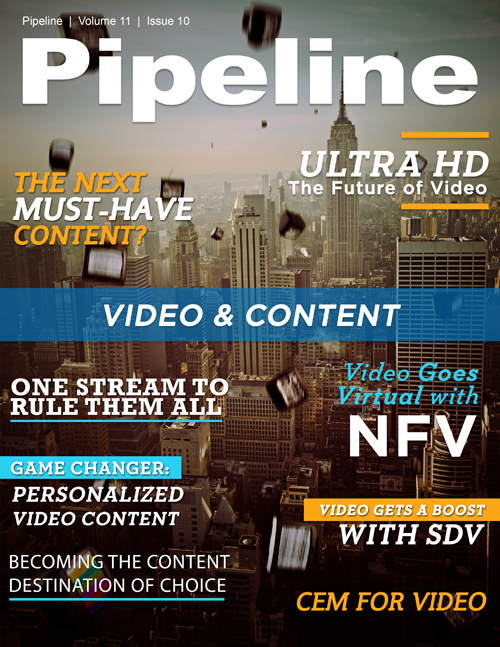What is the Next Must-Have Content?
Which is not to say that margins aren’t eroding and ARPU declining in many cases. There’s still a good bit of lost revenue for service providers. And that’s also not to say that emerging trends might not further degrade service providers’ place in the market. Mark Hughes has a very good piece on this in Forbes, and I’ll talk more about the a la carte question a little later. But a look at that number for newspapers shows what a true fall from grace looks like.
So, with that note about how subscribers spend their cash out of the way, here are a few trends to watch in content.
High-Resolution Video
If you were at CES this year (or in any recent year), it’s clear (pun intended) that higher resolution video is creeping onto screens of all sizes. Ultra HD 4K is the most obvious iteration of this quest for a sharper, more immersive video experience, and VNI expects it to grow exponentially in years to come. Globally, VNI forecasts that by 2018, UltraHD will make up 21.6% of IP VOD traffic, up from 0.2% in 2013. That’s a compound annual growth rate (CAGR) of 198.7%.Ultra HD is also forecast to grow to 10.7% of IP Video traffic in 2018 (up from 0.1% in 2013, a 219.3% CAGR) and 7.5% of Internet video traffic (also up from 0.1%, a 250.0% CAGR).
And if Ultra HD is too passé for you, you can dip into the hype surrounding quantum dot (QD) and 8K TV. Granted, higher-resolution video isn’t content, per se, but the image quality demands (and subsequent bandwidth requirements) of these big, pretty screens is both a challenge and an opportunity for service providers. Cablecos such as Comcast and other providers like DirecTV have already begun using 4K streaming as a competitive differentiator, and it is looking like a must-have.
Virtual Reality
It’s hard to even write the words “virtual reality ready to take off” and take myself at all seriously. I was a kid—a legitimate child with a fondness for Pixy Stix and a pretty impressive Hot Wheels collection—the first time I was promised that VR was on the verge of widespread uptake. And as my hairline will attest, I’m not that young.
But my once-bitten-twice-shy skepticism aside, there seems to be some wind in VR’s virtual sails these days. The early buzz was with the Facebook-acquired Oculus Rift, but new or announced headsets from Samsung and Microsoft, along with Google’s cheap-or-DIY Cardboard project, are demonstrating that this technology is finding traction in a number of mainline companies. And startups, like Fove, are making sure that new headsets test the limits of innovation by introducing new ways of controlling interaction with the virtual environment. Fove uses eye-tracking technology to allow users to move or shoot with a look, an interface that has particularly alluring potential for users with disabilities.
While still a niche market, VR is finally showing some potential for growth as the next must-have gaming content.




















